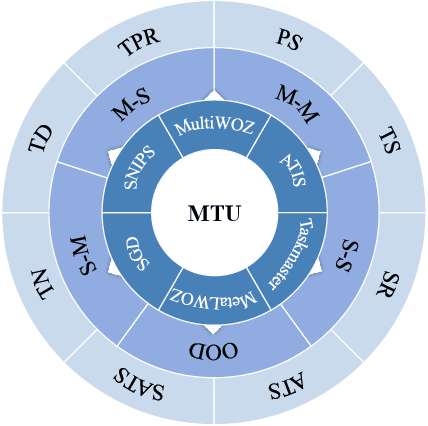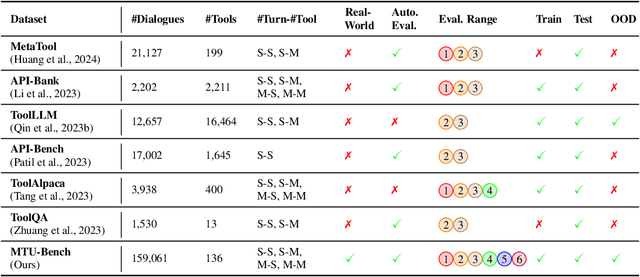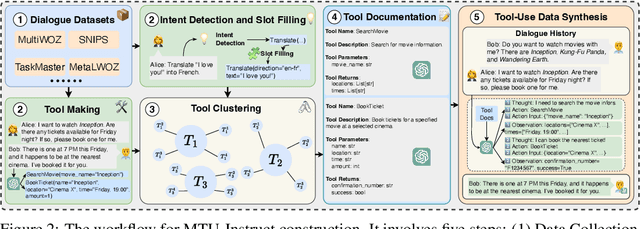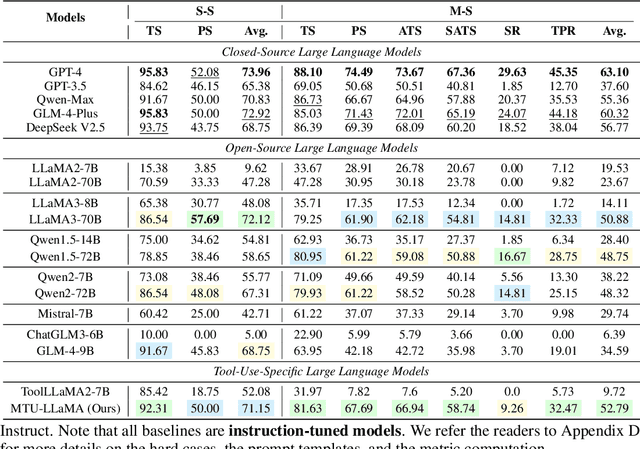Pei Wang
National Astronomical Observatories, Chinese Academy of Sciences
SatelliteFormula: Multi-Modal Symbolic Regression from Remote Sensing Imagery for Physics Discovery
Jun 06, 2025Abstract:We propose SatelliteFormula, a novel symbolic regression framework that derives physically interpretable expressions directly from multi-spectral remote sensing imagery. Unlike traditional empirical indices or black-box learning models, SatelliteFormula combines a Vision Transformer-based encoder for spatial-spectral feature extraction with physics-guided constraints to ensure consistency and interpretability. Existing symbolic regression methods struggle with the high-dimensional complexity of multi-spectral data; our method addresses this by integrating transformer representations into a symbolic optimizer that balances accuracy and physical plausibility. Extensive experiments on benchmark datasets and remote sensing tasks demonstrate superior performance, stability, and generalization compared to state-of-the-art baselines. SatelliteFormula enables interpretable modeling of complex environmental variables, bridging the gap between data-driven learning and physical understanding.
Reinforcement Learning Optimization for Large-Scale Learning: An Efficient and User-Friendly Scaling Library
Jun 06, 2025Abstract:We introduce ROLL, an efficient, scalable, and user-friendly library designed for Reinforcement Learning Optimization for Large-scale Learning. ROLL caters to three primary user groups: tech pioneers aiming for cost-effective, fault-tolerant large-scale training, developers requiring flexible control over training workflows, and researchers seeking agile experimentation. ROLL is built upon several key modules to serve these user groups effectively. First, a single-controller architecture combined with an abstraction of the parallel worker simplifies the development of the training pipeline. Second, the parallel strategy and data transfer modules enable efficient and scalable training. Third, the rollout scheduler offers fine-grained management of each sample's lifecycle during the rollout stage. Fourth, the environment worker and reward worker support rapid and flexible experimentation with agentic RL algorithms and reward designs. Finally, AutoDeviceMapping allows users to assign resources to different models flexibly across various stages.
When Cloud Removal Meets Diffusion Model in Remote Sensing
Apr 21, 2025Abstract:Cloud occlusion significantly hinders remote sensing applications by obstructing surface information and complicating analysis. To address this, we propose DC4CR (Diffusion Control for Cloud Removal), a novel multimodal diffusion-based framework for cloud removal in remote sensing imagery. Our method introduces prompt-driven control, allowing selective removal of thin and thick clouds without relying on pre-generated cloud masks, thereby enhancing preprocessing efficiency and model adaptability. Additionally, we integrate low-rank adaptation for computational efficiency, subject-driven generation for improved generalization, and grouped learning to enhance performance on small datasets. Designed as a plug-and-play module, DC4CR seamlessly integrates into existing cloud removal models, providing a scalable and robust solution. Extensive experiments on the RICE and CUHK-CR datasets demonstrate state-of-the-art performance, achieving superior cloud removal across diverse conditions. This work presents a practical and efficient approach for remote sensing image processing with broad real-world applications.
SatelliteCalculator: A Multi-Task Vision Foundation Model for Quantitative Remote Sensing Inversion
Apr 18, 2025



Abstract:Quantitative remote sensing inversion plays a critical role in environmental monitoring, enabling the estimation of key ecological variables such as vegetation indices, canopy structure, and carbon stock. Although vision foundation models have achieved remarkable progress in classification and segmentation tasks, their application to physically interpretable regression remains largely unexplored. Furthermore, the multi-spectral nature and geospatial heterogeneity of remote sensing data pose significant challenges for generalization and transferability. To address these issues, we introduce SatelliteCalculator, the first vision foundation model tailored for quantitative remote sensing inversion. By leveraging physically defined index formulas, we automatically construct a large-scale dataset of over one million paired samples across eight core ecological indicators. The model integrates a frozen Swin Transformer backbone with a prompt-guided architecture, featuring cross-attentive adapters and lightweight task-specific MLP decoders. Experiments on the Open-Canopy benchmark demonstrate that SatelliteCalculator achieves competitive accuracy across all tasks while significantly reducing inference cost. Our results validate the feasibility of applying foundation models to quantitative inversion, and provide a scalable framework for task-adaptive remote sensing estimation.
Point-Driven Interactive Text and Image Layer Editing Using Diffusion Models
Apr 18, 2025Abstract:We present DanceText, a training-free framework for multilingual text editing in images, designed to support complex geometric transformations and achieve seamless foreground-background integration. While diffusion-based generative models have shown promise in text-guided image synthesis, they often lack controllability and fail to preserve layout consistency under non-trivial manipulations such as rotation, translation, scaling, and warping. To address these limitations, DanceText introduces a layered editing strategy that separates text from the background, allowing geometric transformations to be performed in a modular and controllable manner. A depth-aware module is further proposed to align appearance and perspective between the transformed text and the reconstructed background, enhancing photorealism and spatial consistency. Importantly, DanceText adopts a fully training-free design by integrating pretrained modules, allowing flexible deployment without task-specific fine-tuning. Extensive experiments on the AnyWord-3M benchmark demonstrate that our method achieves superior performance in visual quality, especially under large-scale and complex transformation scenarios.
Prompt-Driven and Training-Free Forgetting Approach and Dataset for Large Language Models
Apr 17, 2025Abstract:The widespread adoption of diffusion models in image generation has increased the demand for privacy-compliant unlearning. However, due to the high-dimensional nature and complex feature representations of diffusion models, achieving selective unlearning remains challenging, as existing methods struggle to remove sensitive information while preserving the consistency of non-sensitive regions. To address this, we propose an Automatic Dataset Creation Framework based on prompt-based layered editing and training-free local feature removal, constructing the ForgetMe dataset and introducing the Entangled evaluation metric. The Entangled metric quantifies unlearning effectiveness by assessing the similarity and consistency between the target and background regions and supports both paired (Entangled-D) and unpaired (Entangled-S) image data, enabling unsupervised evaluation. The ForgetMe dataset encompasses a diverse set of real and synthetic scenarios, including CUB-200-2011 (Birds), Stanford-Dogs, ImageNet, and a synthetic cat dataset. We apply LoRA fine-tuning on Stable Diffusion to achieve selective unlearning on this dataset and validate the effectiveness of both the ForgetMe dataset and the Entangled metric, establishing them as benchmarks for selective unlearning. Our work provides a scalable and adaptable solution for advancing privacy-preserving generative AI.
A Diffusion-Based Framework for Terrain-Aware Remote Sensing Image Reconstruction
Apr 16, 2025Abstract:Remote sensing imagery is essential for environmental monitoring, agricultural management, and disaster response. However, data loss due to cloud cover, sensor failures, or incomplete acquisition-especially in high-resolution and high-frequency tasks-severely limits satellite imagery's effectiveness. Traditional interpolation methods struggle with large missing areas and complex structures. Remote sensing imagery consists of multiple bands, each with distinct meanings, and ensuring consistency across bands is critical to avoid anomalies in the combined images. This paper proposes SatelliteMaker, a diffusion-based method that reconstructs missing data across varying levels of data loss while maintaining spatial, spectral, and temporal consistency. We also propose Digital Elevation Model (DEM) as a conditioning input and use tailored prompts to generate realistic images, making diffusion models applicable to quantitative remote sensing tasks. Additionally, we propose a VGG-Adapter module based on Distribution Loss, which reduces distribution discrepancy and ensures style consistency. Extensive experiments show that SatelliteMaker achieves state-of-the-art performance across multiple tasks.
Rainy: Unlocking Satellite Calibration for Deep Learning in Precipitation
Apr 15, 2025Abstract:Precipitation plays a critical role in the Earth's hydrological cycle, directly affecting ecosystems, agriculture, and water resource management. Accurate precipitation estimation and prediction are crucial for understanding climate dynamics, disaster preparedness, and environmental monitoring. In recent years, artificial intelligence (AI) has gained increasing attention in quantitative remote sensing (QRS), enabling more advanced data analysis and improving precipitation estimation accuracy. Although traditional methods have been widely used for precipitation estimation, they face limitations due to the difficulty of data acquisition and the challenge of capturing complex feature relationships. Furthermore, the lack of standardized multi-source satellite datasets, and in most cases, the exclusive reliance on station data, significantly hinders the effective application of advanced AI models. To address these challenges, we propose the Rainy dataset, a multi-source spatio-temporal dataset that integrates pure satellite data with station data, and propose Taper Loss, designed to fill the gap in tasks where only in-situ data is available without area-wide support. The Rainy dataset supports five main tasks: (1) satellite calibration, (2) precipitation event prediction, (3) precipitation level prediction, (4) spatiotemporal prediction, and (5) precipitation downscaling. For each task, we selected benchmark models and evaluation metrics to provide valuable references for researchers. Using precipitation as an example, the Rainy dataset and Taper Loss demonstrate the seamless collaboration between QRS and computer vision, offering data support for AI for Science in the field of QRS and providing valuable insights for interdisciplinary collaboration and integration.
Automatic marker-free registration based on similar tetrahedras for single-tree point clouds
Nov 20, 2024



Abstract:In recent years, terrestrial laser scanning technology has been widely used to collect tree point cloud data, aiding in measurements of diameter at breast height, biomass, and other forestry survey data. Since a single scan from terrestrial laser systems captures data from only one angle, multiple scans must be registered and fused to obtain complete tree point cloud data. This paper proposes a marker-free automatic registration method for single-tree point clouds based on similar tetrahedras. First, two point clouds from two scans of the same tree are used to generate tree skeletons, and key point sets are constructed from these skeletons. Tetrahedra are then filtered and matched according to similarity principles, with the vertices of these two matched tetrahedras selected as matching point pairs, thus completing the coarse registration of the point clouds from the two scans. Subsequently, the ICP method is applied to the coarse-registered leaf point clouds to obtain fine registration parameters, completing the precise registration of the two tree point clouds. Experiments were conducted using terrestrial laser scanning data from eight trees, each from different species and with varying shapes. The proposed method was evaluated using RMSE and Hausdorff distance, compared against the traditional ICP and NDT methods. The experimental results demonstrate that the proposed method significantly outperforms both ICP and NDT in registration accuracy, achieving speeds up to 593 times and 113 times faster than ICP and NDT, respectively. In summary, the proposed method shows good robustness in single-tree point cloud registration, with significant advantages in accuracy and speed compared to traditional ICP and NDT methods, indicating excellent application prospects in practical registration scenarios.
MTU-Bench: A Multi-granularity Tool-Use Benchmark for Large Language Models
Oct 15, 2024



Abstract:Large Language Models (LLMs) have displayed massive improvements in reasoning and decision-making skills and can hold natural conversations with users. Recently, many tool-use benchmark datasets have been proposed. However, existing datasets have the following limitations: (1). Insufficient evaluation scenarios (e.g., only cover limited tool-use scenes). (2). Extensive evaluation costs (e.g., GPT API costs). To address these limitations, in this work, we propose a multi-granularity tool-use benchmark for large language models called MTU-Bench. For the "multi-granularity" property, our MTU-Bench covers five tool usage scenes (i.e., single-turn and single-tool, single-turn and multiple-tool, multiple-turn and single-tool, multiple-turn and multiple-tool, and out-of-distribution tasks). Besides, all evaluation metrics of our MTU-Bench are based on the prediction results and the ground truth without using any GPT or human evaluation metrics. Moreover, our MTU-Bench is collected by transforming existing high-quality datasets to simulate real-world tool usage scenarios, and we also propose an instruction dataset called MTU-Instruct data to enhance the tool-use abilities of existing LLMs. Comprehensive experimental results demonstrate the effectiveness of our MTU-Bench. Code and data will be released at https: //github.com/MTU-Bench-Team/MTU-Bench.git.
 Add to Chrome
Add to Chrome Add to Firefox
Add to Firefox Add to Edge
Add to Edge